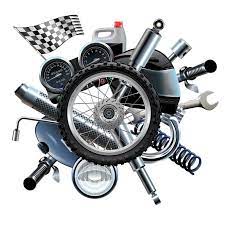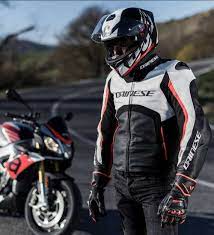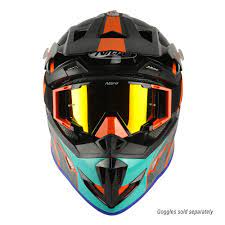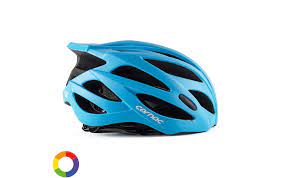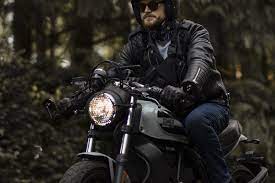
Motorcycle Apparel: The Perfect Blend of Style and Safety
When it comes to riding motorcycles, safety should always be a top priority. One of the key elements in ensuring rider safety is the right choice of motorcycle apparel. Not only does it provide protection, but it also adds style and enhances the overall riding experience. In this article, we will explore the importance of motorcycle apparel and the various options available for riders.
First and foremost, let’s address the primary purpose of motorcycle apparel – protection. Motorcyclists are more exposed to potential risks on the road compared to other motorists. Therefore, wearing appropriate gear can significantly reduce the chances of injury in case of an accident. Motorcycle jackets, for instance, are designed with reinforced materials such as leather or durable textiles that offer abrasion resistance and impact protection.
Another essential piece of motorcycle apparel is the helmet. A certified helmet not only protects your head from potential injuries but also helps reduce wind noise and fatigue during long rides. It’s crucial to choose a helmet that fits properly and meets safety standards to ensure maximum protection.
Gloves are often overlooked by riders but play a vital role in maintaining control and grip on the handlebars. They protect your hands from blisters, debris, and provide an extra layer of protection in case of a fall or slide.
Riding pants or trousers are designed to offer both comfort and protection. They come in various styles such as jeans with built-in Kevlar panels or textile pants with armor inserts. These pants provide abrasion resistance and impact protection for your lower body.
Motorcycle boots are another essential component of riding gear. They not only provide ankle support but also protect your feet from impacts, debris, and extreme weather conditions. Look for boots with sturdy soles and reinforced materials for optimum safety.
Now that we’ve covered the importance of safety gear let’s discuss how motorcycle apparel can add style to your riding experience. With advancements in design and technology, motorcycle apparel has become more fashionable than ever before. Riders can choose from a wide range of styles, colors, and patterns that suit their individual preferences.
From classic leather jackets to sleek textile suits, there is an abundance of options available to match your personal style. Many brands offer gear that combines both safety and style, ensuring riders can look good while staying protected on the road.
Additionally, motorcycle apparel manufacturers are increasingly incorporating innovative features into their products. From ventilation systems that keep you cool during hot summer rides to waterproof materials that keep you dry in wet weather conditions, these advancements enhance comfort and convenience for riders.
In conclusion, motorcycle apparel is a crucial aspect of riding that should never be overlooked. It not only provides essential protection but also adds style and enhances the overall riding experience. Investing in high-quality gear is an investment in your safety and well-being on the road. So, whether you’re a seasoned rider or just starting out, make sure to prioritize safety by choosing the right motorcycle apparel for your next adventure. Ride safe and stylish!
8 Frequently Asked Questions About Motorcycle Apparel: Your Guide to Choosing, Sizing, and Maintaining
- What type of motorcycle apparel should I wear?
- What safety features should I look for in motorcycle apparel?
- Is there a difference between men’s and women’s motorcycle apparel?
- How do I choose the right size of motorcycle apparel?
- Are there any special considerations when buying waterproof motorcycle apparel?
- What materials are used to make the best quality motorcycle apparel?
- Where can I find affordable yet high-quality motorcycle apparel?
- Are there any tips for maintaining my motorcycle apparel in good condition?
What type of motorcycle apparel should I wear?
When it comes to choosing motorcycle apparel, there are several key pieces that you should consider wearing for optimal safety and protection. Here are some essential types of motorcycle apparel to consider:
- Helmet: A certified helmet is a must for every rider. It protects your head from potential injuries and should meet safety standards. Look for helmets that fit properly and provide adequate ventilation.
- Jacket: A good motorcycle jacket offers both style and protection. Look for jackets made from durable materials like leather or textiles with reinforced panels in critical areas. These jackets provide abrasion resistance and impact protection.
- Gloves: Riding gloves protect your hands from blisters, debris, and provide better grip on the handlebars. Choose gloves that fit well and offer impact protection on the knuckles and palms.
- Pants/Trousers: Riding pants or trousers are designed to provide protection for your lower body. Look for pants made from materials like Kevlar or textiles with armor inserts in the knees and hips. They offer abrasion resistance in case of a fall or slide.
- Boots: Motorcycle boots provide ankle support, protect your feet from impacts, debris, and extreme weather conditions. Look for boots with sturdy soles, ankle protection, and reinforced materials.
- Rain Gear: Consider investing in waterproof rain gear such as rain jackets or pants to keep you dry during wet weather conditions.
- Eye Protection: Whether it’s a full-face helmet with a visor or separate goggles, proper eye protection is essential to shield your eyes from wind, debris, insects, and UV rays.
Remember, fit is crucial when it comes to motorcycle apparel as it ensures maximum comfort and functionality while riding. It’s recommended to try on different brands and sizes to find the gear that fits you best.
Additionally, consider the climate you’ll be riding in—ventilated gear is ideal for hot weather while insulated gear is suitable for colder climates.
Lastly, always prioritize safety over style when choosing motorcycle apparel. Look for gear that meets safety standards and provides adequate protection for your riding needs.
What safety features should I look for in motorcycle apparel?
When choosing motorcycle apparel, it’s important to consider the safety features that will provide optimal protection on the road. Here are some key safety features to look for:
- Abrasion Resistance: Motorcycle apparel should be made from materials that offer high abrasion resistance, such as leather or durable textiles like Cordura. These materials help protect against road rash in case of a fall or slide.
- Impact Protection: Look for apparel with built-in armor inserts in critical areas like shoulders, elbows, and knees. These protectors absorb and distribute impact energy, reducing the risk of fractures or injuries.
- Reinforced Stitching: Strong and reinforced stitching ensures that the apparel stays intact during an accident, preventing it from tearing apart upon impact.
- Reflective Elements: Visibility is crucial for rider safety, especially during low-light conditions. Look for apparel with reflective elements or piping that enhance your visibility to other motorists.
- CE Certification: Check if the motorcycle apparel carries CE (Conformité Européene) certification. This indicates that the gear has been tested and meets European safety standards.
- Proper Fit: Ensure that your motorcycle apparel fits correctly and snugly without restricting movement. Ill-fitting gear may not provide adequate protection in case of an accident.
- Ventilation: Riding in hot weather can be uncomfortable, so look for apparel with ventilation features like mesh panels or zippered vents to keep you cool and prevent overheating.
- Waterproofing: If you frequently ride in wet weather conditions, consider gear with waterproof membranes or coatings to keep you dry and maintain comfort during rainy rides.
- Closure Systems: Pay attention to closure systems on jackets and pants such as zippers, snaps, or Velcro straps. These should be secure and reliable to ensure that your gear stays in place during a ride.
- Helmet Safety Standards: When choosing a helmet, make sure it meets safety standards such as DOT (Department of Transportation), ECE (Economic Commission for Europe), or Snell certification. These standards ensure that the helmet provides adequate protection in case of an impact.
Remember, safety should always be a priority when selecting motorcycle apparel. By considering these key safety features, you can make informed choices to protect yourself while enjoying your rides.
Is there a difference between men’s and women’s motorcycle apparel?
Yes, there are differences between men’s and women’s motorcycle apparel. While the primary purpose of both is safety and protection, there are variations in design, fit, and style to cater to the specific needs and preferences of each gender.
One of the main differences lies in the fit. Men’s motorcycle apparel tends to have a broader shoulder and chest area, while women’s gear is designed to accommodate a narrower waist and broader hips. This ensures a more comfortable and tailored fit for each gender.
In terms of design, women’s motorcycle apparel often includes specific features that address their unique body shape and comfort requirements. For example, jackets may have adjustable waist tabs or stretch panels to provide a better fit around the curves. Similarly, pants may have a higher rise or contoured shaping to accommodate the female body shape.
Style options also differ between men’s and women’s motorcycle apparel. Women’s gear often offers a wider range of color choices beyond traditional black or dark tones. Additionally, some brands incorporate feminine accents such as floral patterns or tailored silhouettes into their designs.
It is important to note that while there are gender-specific options available in motorcycle apparel, many brands also offer unisex styles that can be worn by both men and women. These styles typically focus on providing a neutral fit without compromising on safety or functionality.
Ultimately, whether you choose men’s or women’s motorcycle apparel depends on your personal preference, body shape, and comfort requirements. The most important factor is ensuring that the gear meets safety standards and provides adequate protection for your riding needs.
How do I choose the right size of motorcycle apparel?
Choosing the right size of motorcycle apparel is crucial for both comfort and safety. Ill-fitting gear can restrict movement, cause discomfort, and potentially compromise the effectiveness of its protective features. Here are some steps to help you find the right size:
- Take accurate measurements: Use a measuring tape to measure your chest, waist, hips, inseam, and any other relevant body parts based on the specific garment you are looking to purchase. Refer to the manufacturer’s sizing chart for guidance on which measurements are needed.
- Review the sizing chart: Each brand or manufacturer may have slightly different sizing standards, so it’s important to consult their specific sizing chart. Compare your measurements with the chart to determine which size corresponds best with your measurements.
- Consider fit preferences: Decide whether you prefer a snug or relaxed fit for your motorcycle apparel. Keep in mind that gear should be comfortably snug without being too tight or restrictive.
- Read customer reviews: Look for reviews from other riders who have purchased the same item of clothing. They may provide insights into how true-to-size the product is or if there are any particular fitting considerations.
- Try on multiple sizes: If possible, try on different sizes of the same garment to assess how they feel and move on your body. Pay attention to areas such as shoulders, chest, waist, and length to ensure a proper fit.
- Check for adjustability features: Many motorcycle apparel items come with adjustable features like straps or buckles that allow you to fine-tune the fit according to your body shape and preferences.
- Consider layering options: If you plan on wearing additional layers underneath your motorcycle gear during colder seasons, take that into account when choosing your size to ensure enough room for comfortable layering.
- Seek expert advice: If you’re unsure about sizing or have specific concerns about certain brands or products, reach out to customer service representatives or visit a local motorcycle gear store. They can provide guidance and recommendations based on their expertise.
Remember, proper fit is essential for optimal comfort, freedom of movement, and safety. Taking the time to find the right size will ensure that your motorcycle apparel performs as intended and enhances your riding experience.
Are there any special considerations when buying waterproof motorcycle apparel?
When it comes to buying waterproof motorcycle apparel, there are a few special considerations to keep in mind. Here are some key factors to consider:
- Waterproof Material: Look for gear that is specifically designed with waterproof materials. Common options include textiles with waterproof membranes or laminated fabrics. These materials help keep you dry by preventing water from penetrating through the fabric.
- Sealed Seams: Check if the gear has sealed seams. Sealed seams prevent water from seeping through the stitching, ensuring maximum waterproofing. Taped or welded seams are commonly used in high-quality waterproof gear.
- Breathability: While keeping water out is important, it’s equally crucial to allow moisture and perspiration to escape from within the gear. Look for apparel that offers breathability features such as vents or breathable membranes, allowing airflow and preventing excessive sweating.
- Fit and Comfort: Ensure that the waterproof gear fits well and allows freedom of movement while riding. It should not be too tight or restrictive, as this can affect comfort and mobility on the bike.
- Closure Systems: Pay attention to closure systems such as zippers, Velcro straps, or snaps on jackets and pants. These closures should be designed to keep water out effectively, ensuring a secure fit even in wet conditions.
- Additional Features: Consider additional features that enhance waterproofing and functionality, such as adjustable cuffs, high collars, storm flaps over zippers, and waterproof pockets for storing essentials.
- Durability: Check for durability features like reinforced areas on high-wear zones (such as elbows and knees) to ensure long-lasting performance.
- Reviews and Recommendations: Before making a purchase, read reviews from other riders or seek recommendations from experienced motorcyclists who have already tested the gear in wet conditions.
Remember that no gear can guarantee 100% waterproofing in all conditions indefinitely. Over time, wear and tear may affect the effectiveness of waterproofing. Regularly maintain and reapply waterproofing treatments as recommended by the manufacturer to prolong the gear’s water-resistant properties.
By considering these factors, you can make an informed decision when purchasing waterproof motorcycle apparel that will keep you dry and comfortable during your rides, regardless of the weather conditions.
What materials are used to make the best quality motorcycle apparel?
The best quality motorcycle apparel is often made from a combination of durable and protective materials. Here are some commonly used materials in high-quality motorcycle apparel:
- Leather: Leather has been a popular choice for motorcycle gear for many years due to its excellent abrasion resistance and durability. It provides a strong layer of protection against road rash and impacts. Full-grain leather is considered the highest quality, as it retains the natural grain and strength of the hide.
- Textiles: Modern textiles such as Cordura, Kevlar, and ballistic nylon are commonly used in motorcycle apparel. These materials offer excellent abrasion resistance while providing flexibility and breathability. They are often reinforced with additional protective layers in critical areas like shoulders, elbows, and knees.
- Armor: Many motorcycle jackets, pants, and suits come equipped with armor inserts made from materials like impact-resistant polymers or foam padding. These inserts provide added protection to vulnerable areas such as the back, shoulders, elbows, hips, and knees.
- Gore-Tex: Gore-Tex is a highly breathable yet waterproof membrane that is often incorporated into motorcycle gear to keep riders dry in wet weather conditions. It allows moisture to escape while preventing water from entering the garment.
- Mesh: Mesh panels or textiles with mesh construction are used in warm-weather riding gear to promote airflow and ventilation. These materials help keep riders cool by allowing air circulation without compromising safety.
- Reflective Materials: Reflective strips or panels made from special materials are often added to motorcycle apparel to enhance visibility during low-light conditions or at night.
It’s important to note that different manufacturers may use proprietary materials or combinations of these materials to create their own unique products with varying levels of quality and performance. When choosing motorcycle apparel, consider factors such as the intended use (e.g., touring vs sport riding), climate conditions, personal preferences, and safety certifications (e.g., CE-approved armor) to ensure you select the best quality gear for your specific needs.
Where can I find affordable yet high-quality motorcycle apparel?
Finding affordable yet high-quality motorcycle apparel can be a challenge, but there are several options available to help you get the best value for your money. Here are a few places where you can start your search:
- Online Retailers: Websites such as RevZilla, Cycle Gear, and Motorcycle Superstore offer a wide range of motorcycle gear at various price points. They often have sales and discounts, making it easier to find affordable options without compromising on quality.
- Outlet Stores: Many popular motorcycle apparel brands have outlet stores or sections on their websites where you can find discounted items from previous seasons or overstocked inventory. These outlets often offer significant savings on high-quality gear.
- Local Motorcycle Shops: Visit your local motorcycle shops and check out their sales or clearance sections. They may have discounted items or special promotions that can help you find affordable gear without sacrificing quality.
- Second-hand Marketplaces: Consider checking out online marketplaces like eBay, Craigslist, or Facebook Marketplace for used motorcycle apparel. While buying second-hand gear requires careful inspection, it can be an excellent way to find high-quality items at a fraction of the original price.
- Attend Motorcycle Events: Motorcycle events such as rallies, expos, or swap meets often have vendors selling gear at competitive prices. These events provide an opportunity to browse through different brands and compare prices while also enjoying the vibrant atmosphere.
Remember that while affordability is important, it’s crucial not to compromise on safety and quality when it comes to motorcycle apparel. Look for reputable brands known for their commitment to safety standards and durability. Always ensure that any gear you purchase meets the necessary certifications and offers adequate protection for your riding needs.
By exploring these options and doing some research, you should be able to find affordable yet high-quality motorcycle apparel that suits both your budget and your riding requirements.
Are there any tips for maintaining my motorcycle apparel in good condition?
Absolutely! Proper maintenance of your motorcycle apparel is essential to ensure its longevity and effectiveness. Here are some tips to help you keep your gear in good condition:
- Read the Care Instructions: Each piece of motorcycle apparel comes with specific care instructions from the manufacturer. Take the time to read and understand these instructions thoroughly. They will provide guidance on how to clean, wash, and care for your gear properly.
- Clean Regularly: Regular cleaning is crucial to remove dirt, sweat, and other contaminants that can degrade the materials over time. Follow the manufacturer’s guidelines for cleaning your gear, whether it’s hand-washing or machine-washing. Use mild detergents specifically designed for technical fabrics.
- Check for Damage: Before each ride, inspect your gear for any signs of damage or wear. Look for loose threads, torn seams, or worn-out protective inserts. Repair or replace any damaged parts promptly to maintain the integrity of your gear.
- Storage Matters: Proper storage is important to prevent damage when you’re not using your motorcycle apparel. Hang jackets and pants on sturdy hangers in a well-ventilated area away from direct sunlight or extreme temperatures. Avoid folding or cramming them into tight spaces as this can cause creases and deformation.
- Waterproofing: If your gear has waterproofing features, periodically reapply waterproofing treatments as recommended by the manufacturer. This helps maintain their water-resistant properties and keeps you dry during rainy rides.
- Avoid Harsh Chemicals: When cleaning your gear, avoid using harsh chemicals, bleach, or fabric softeners as they can damage the materials and compromise their protective capabilities.
- Protect Leather Gear: If you have leather motorcycle apparel such as jackets or boots, consider applying leather conditioner regularly to keep them supple and prevent cracking or drying out.
- Store Gloves Properly: When not in use, store gloves in a cool and dry place away from direct sunlight. Avoid placing heavy objects on top of them to maintain their shape and flexibility.
- Follow Helmet Care Guidelines: Helmets require special care. Clean the exterior with mild soap and water, avoiding abrasive cleaners that can damage the helmet’s finish. Use a soft cloth to wipe the visor clean, and never use solvents or harsh chemicals.
- Replace When Necessary: Motorcycle apparel has a lifespan, especially when it comes to protective features like armor inserts or helmets. If your gear has been involved in an accident or shows signs of significant wear and tear, it may be time to replace it to ensure continued safety and protection.
By following these maintenance tips, you can keep your motorcycle apparel in good condition, extending its lifespan and ensuring optimal performance when you hit the road. Remember that proper care not only protects your investment but also enhances your safety on every ride.
